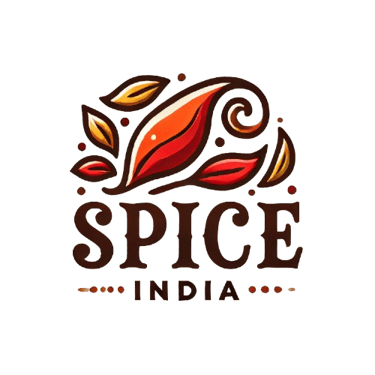Discover Authentic Indian Spices: A Journey Through Flavor and Tradition
India is a land blessed with a diverse array of spices that not only enhance the flavor of its cuisine but also carry a rich cultural heritage. Each spice has its own unique story and contributes to the symphony of flavors that define Indian cooking. Join us on a journey through these authentic Indian spices as we explore their history, uses, and benefits
4/24/20253 min read


🌿 Turmeric
History/Origin: Native to India and Southeast Asia, used for over 4,000 years in cooking, rituals, and medicine.
Flavor Profile: Warm, earthy, and slightly bitter with a peppery bite.
Culinary Uses: Found in almost every curry, as well as dals, rice dishes, pickles, and Golden Milk.
Health Benefits: Anti-inflammatory, antioxidant, supports immune health, and aids digestion.
Interesting Fact: Contains curcumin, which gives turmeric its bright yellow hue and healing power.
🌿 Cumin
History/Origin: Originated in the Eastern Mediterranean and India, used since ancient Egyptian times.
Flavor Profile: Nutty, warm, and slightly peppery with a distinctive aroma.
Culinary Uses: Base spice in Indian tadka (tempering), chutneys, curries, spice blends like Garam Masala.
Health Benefits: Aids digestion, improves metabolism, and may help in weight loss.
Interesting Fact: Known as jeera in Hindi, cumin is often dry roasted to enhance its aromatic oils.
🌿 Coriander
History/Origin: Native to Southern Europe and the Mediterranean; introduced to India thousands of years ago.
Flavor Profile: Citrusy, sweet, and slightly nutty. Leaves and seeds offer different tastes.
Culinary Uses: Widely used in curries, sambar, spice powders, and garnishing.
Health Benefits: Rich in antioxidants, supports blood sugar control, and aids digestion.
Interesting Fact: Both the seeds and leaves (cilantro) are used in cooking, offering distinct flavors.
🌿 Cardamom
History/Origin: Indigenous to Southern India; one of the oldest known spices.
Flavor Profile: Sweet, floral, and citrusy with hints of eucalyptus.
Culinary Uses: Used in desserts, biryanis, masala chai, and spice blends like Garam Masala.
Health Benefits: Aids digestion, freshens breath, and supports respiratory health.
Interesting Fact: Known as the “Queen of Spices”, Indian cardamom is among the most prized globally.
🌿 Black Pepper
History/Origin: Native to the Western Ghats of Kerala, India; traded since ancient Roman times.
Flavor Profile: Sharp, pungent, and mildly spicy with earthy undertones.
Culinary Uses: Found in almost every Indian dish — from rasam to meat marinades and spice blends.
Health Benefits: Improves digestion, boosts nutrient absorption, and has anti-inflammatory properties.
Interesting Fact: Contains piperine, a compound that enhances the bioavailability of other nutrients.
🌿 Cloves
History/Origin: Native to the Maluku Islands (Indonesia), but widely cultivated in Southern India.
Flavor Profile: Intense, warm, sweet-spicy with a touch of bitterness.
Culinary Uses: Common in biryanis, spice blends, teas, and desserts.
Health Benefits: Anti-microbial, relieves toothaches, aids digestion, and has antioxidant effects.
Interesting Fact: Clove oil is still used in dental care for its natural anesthetic properties.
🌿 Cinnamon
History/Origin: Ancient spice originating from Sri Lanka and South India.
Flavor Profile: Sweet, woody, and warm with mild spicy notes.
Culinary Uses: Used in Indian desserts, curries, pulaos, and masala chai.
Health Benefits: Regulates blood sugar, fights infections, and supports heart health.
Interesting Fact: Indian cinnamon is called “Dalchini” and has a subtler, sweeter taste than Cassia.
🌿 Fenugreek
History/Origin: Cultivated since ancient times in India, Egypt, and the Mediterranean.
Flavor Profile: Slightly bitter with a nutty, maple-syrup-like aroma when toasted.
Culinary Uses: Used in pickles, lentils, curries, and spice blends like Panch Phoron.
Health Benefits: Balances blood sugar, improves lactation, and aids in digestion.
Interesting Fact: The seeds and leaves (known as methi) are both used in cooking.
🌿 Mustard Seeds
History/Origin: Cultivated in India for over 3,000 years; an essential in traditional cooking.
Flavor Profile: Pungent, nutty, and spicy when roasted or ground.
Culinary Uses: Crucial in South Indian tadka, pickles, mustard pastes, and spice blends.
Health Benefits: Stimulates digestion, may relieve muscular pain, and improves heart health.
Interesting Fact: When added to hot oil, mustard seeds pop and crackle, releasing a nutty aroma that forms the base of many Indian dishes.
🌏 Conclusion: A Heritage of Healing and Flavor
Each of these authentic Indian spices is a testament to the country’s deep-rooted culinary traditions and its centuries-old understanding of holistic health. From the flavor-packed kitchens of Kerala to the healing prescriptions of Ayurveda, Indian spices not only make food delicious but also nourish the body and soul.
Spice India
Authentic Indian spices delivered globally with care.
Quick Links
Corporate Address
Spice India © 2025. All rights reserved.
P3A/82 Sector 27 Nawa Raipur,
Raipur, Chhattisgarh, India
Pin - 492002
Email: enquiry@spiceind.com
Phone: +91 9977303056
